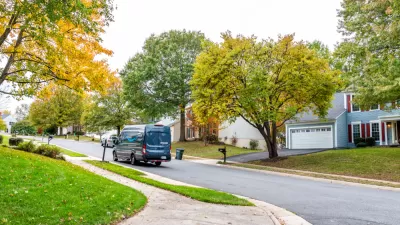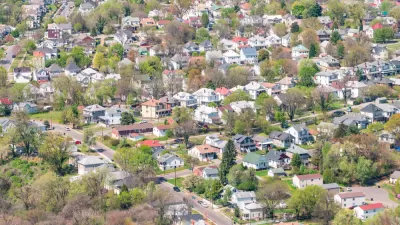California State Senator has released draft legislation to follow up on the previous SB 50, which in turn followed up on SB 827. The new bill, SB 902, promises a "light touch."

California State Senator Scott Wiener "is back with a new housing bill aimed at alleviating the state's housing shortage," reports Erin Baldesarri.
The Democratic San Francisco state senator introduced the bill, called SB 902, on Monday. It’s a follow-up to SB 50, a controversial proposal that would have allowed for taller apartment buildings in urban areas near transit and job centers, along with fourplexes throughout the state. That bill died early this year.
Wiener’s new bill would allow duplexes in cities with fewer than 10,000 residents, triplexes in cities with between 10,000 to 50,000 residents and fourplexes in cities with more than 50,000. Current building heights imposed by cities would stay the same under the bill, along with other local building rules, such as design guidelines.
According to Baldessari's explanation, SB 902 is designed to avoid concerns about SB 50 as a "one-size-fits-all" approach. Wiener is quoted in the article saying that buildings allowed under SB 902 would be much smaller than buildings required under SB 902.
Still, SB 902 would alter zoning codes around the state, as noted in a separate article on the news by John Meyers: "While the bill would not change local control over the size and shape of housing built in those neighborhoods, it would supersede local zoning rules that have limited density."
"The new legislation, Senate Bill 902, also seeks to provide incentives for larger cities that are willing to allow 10-unit projects. After a vote by local officials, those zoning efforts would be exempt from additional review under the California Environmental Quality Act, or CEQA," adds Myers. "Population numbers compiled by the state Department of Finance show that under the density standards in SB 902, more than three-quarters of all California cities would have to allow triplex or fourplex projects on existing residential land."
Another article by Matt Levin describes SB 902 as a "density vitamin" compared to SB 50's "urban growth hormone."
FULL STORY: Sen. Wiener Wants to Abolish Single-Family-Only Neighborhoods in California

Planetizen Federal Action Tracker
A weekly monitor of how Trump’s orders and actions are impacting planners and planning in America.

Maui's Vacation Rental Debate Turns Ugly
Verbal attacks, misinformation campaigns and fistfights plague a high-stakes debate to convert thousands of vacation rentals into long-term housing.

Restaurant Patios Were a Pandemic Win — Why Were They so Hard to Keep?
Social distancing requirements and changes in travel patterns prompted cities to pilot new uses for street and sidewalk space. Then it got complicated.

In California Battle of Housing vs. Environment, Housing Just Won
A new state law significantly limits the power of CEQA, an environmental review law that served as a powerful tool for blocking new development.

Boulder Eliminates Parking Minimums Citywide
Officials estimate the cost of building a single underground parking space at up to $100,000.

Orange County, Florida Adopts Largest US “Sprawl Repair” Code
The ‘Orange Code’ seeks to rectify decades of sprawl-inducing, car-oriented development.
Urban Design for Planners 1: Software Tools
This six-course series explores essential urban design concepts using open source software and equips planners with the tools they need to participate fully in the urban design process.
Planning for Universal Design
Learn the tools for implementing Universal Design in planning regulations.
Heyer Gruel & Associates PA
JM Goldson LLC
Custer County Colorado
City of Camden Redevelopment Agency
City of Astoria
Transportation Research & Education Center (TREC) at Portland State University
Jefferson Parish Government
Camden Redevelopment Agency
City of Claremont





























